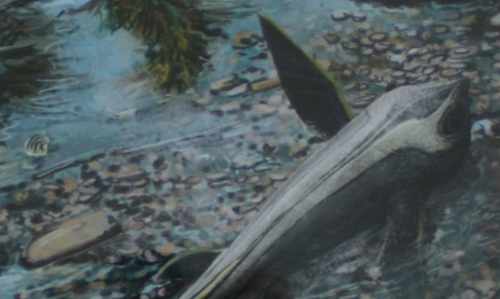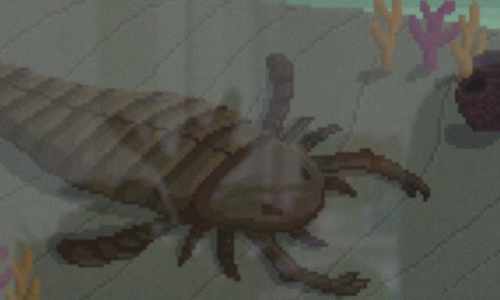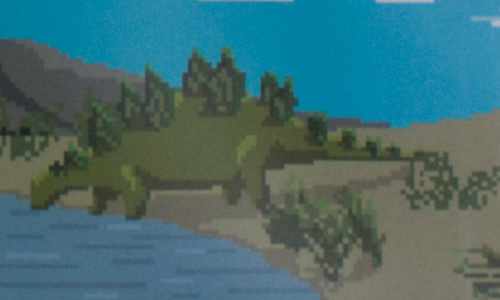Some palaeoart that colour my walls
At the moment, I, and many others, are spending much time indoors. Here in the UK, the lockdown is likely to continue for some time, in one form or another, but I’m lucky enough to have surrounded myself with things to keep my interest and add welcome colour.
Here is a gallery of some of the palaeoart that I have around my flat. You might sense the theme of marine reptiles, and ichthyosaurs in particular, which is surely not surprising. Click through on the thumbnails to see the full images and I’ve included links to the artists below.







I bought the three paintings at the 2018 PalAss meeting in Bristol, and it took me about a year to get them framed, but the look great to me, complemented by coloured mounts.
‘Cartorhynchus lenticarpus: walk like an ichthyosauriform’ by Mark Witton features one of the earliest known ichthyosaurs, thought to be amphibious. Cartorhynchus was first described by Motani et al. (2015) as the first of series of Chinese finds from the Early Triassic of short-snouted, ‘transitional’ early ichthyosaurs, joined later by Sclerocormus (Jiang et al. 2016).
‘Ophthalmosaurus icenicus cruise’ also by Mark is particularly close to me because a major part of my thesis was describing material of Ophthalmosaurus icenicus. Lots of material has been found throughout the Middle–Late Jurassic making this one of the best represented ichthyosaurs, although the incomplete specimens meant that knowledge was difficult to summarise for a long time (Moon & Kirton 2016).
A scene of the Early Jurassic by Bob Nicholls, unfortunately I can’t remember the title. Here featuring many different characteristic animals from the Lias including ammonites and fishes, several ichthyosaurs, pterosaurs, and a large rhomaleosaur taking over and showing who’s boss. The Lias in south-west England has produced a huge number of different animals, from insects through to ocean giants, and perhaps has preserved one of the most complete ancient ecosystems in the UK.
Three posters from the Virtual Natural History Museum have pixel art by Claire Morley that depicts scenes from each of the geological periods of the last 540 million years. The V-NHM is an ongoing project, but these tableau show some of the critters backed by the period-colours and matching style to the museum itself. I sponsored the Jurassic Period, being my favourite of them all.
And finally my feature-wall-clock, backed in teal and about a metre across, so I always know how late I am…
References
Jiang, D., Motani, R., Huang, J.-D., Tintori, A., Hu, Y.-C., Rieppel, O.C., Fraser, N.C., Ji, C., Kelley, N.P., Fu, W. and Zhang, R. 2016. A large aberrant stem ichthyosauriform indicating early rise and demise of ichthyosauromorphs in the wake of the end-Permian extinction. Scientific Reports 6: 26232–26239. doi:10.1038/srep26232
Moon, B.C. and Kirton, A.M. 2016. Ichthyosaurs of the British Middle and Upper Jurassic. Part 1, Ophthalmosaurus. Monograph of the Palaeontographical Society 170: 1–84. doi:10.1080/02693445.2016.11963958
Motani, R., Jiang, D.-Y., Chen, G., Tintori, A., Rieppel, O., Ji, C. and Huang, J.-D. 2015. A basal ichthyosauriform with a short snout from the Lower Triassic of China. Nature 517: 485–488. doi:10.1038/nature13866

Leave a comment